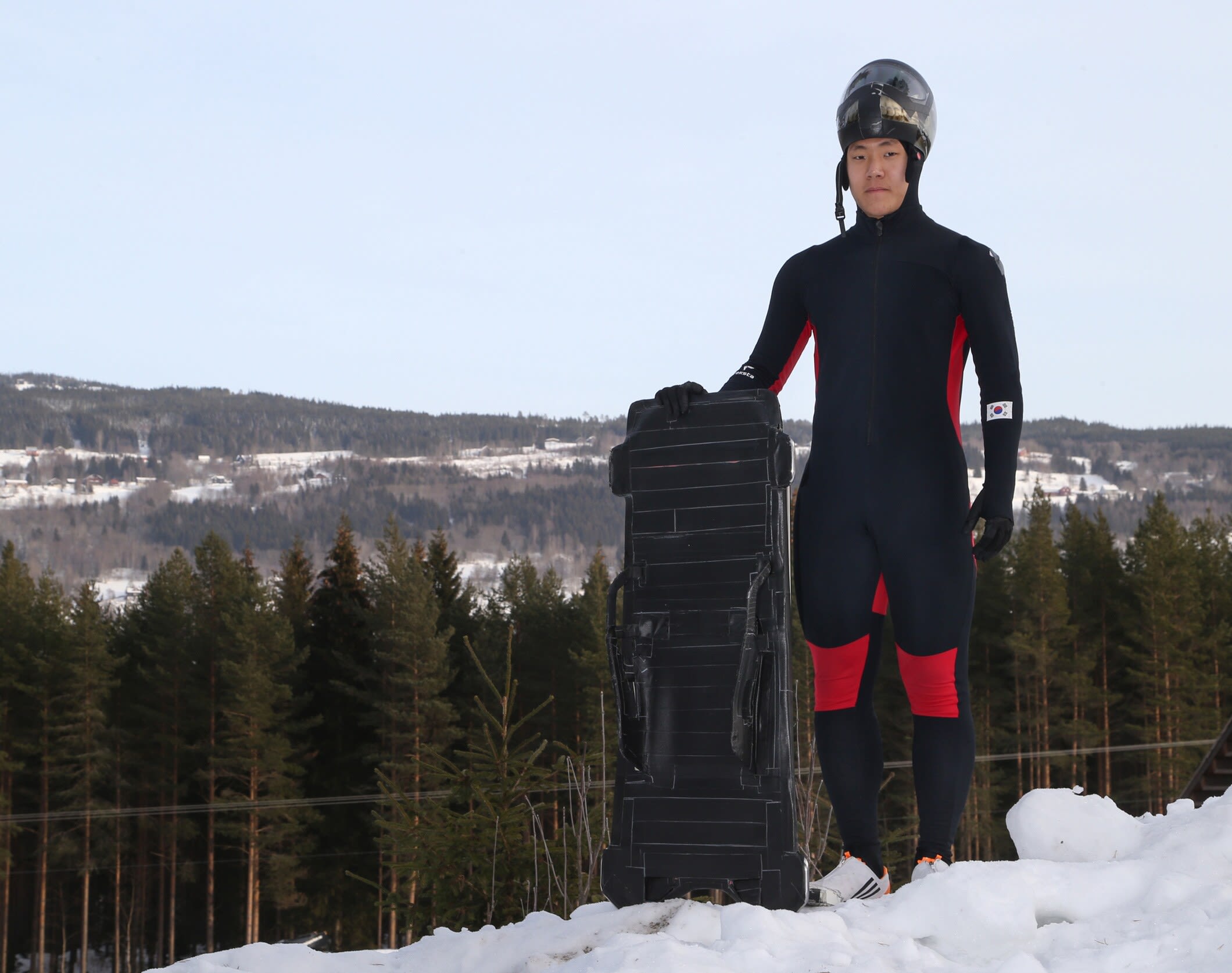Jung Seunggi: One day we'll see a Korean Cool Runnings
It was while idly watching television one day in 2014 that Jung Seunggi’s life changed forever. “I was just a normal student in Seoul, flicking through the channels, and the Sochi Olympic Games came on,” Jung said. “They were showing the skeleton and I loved the look of it.”
“I liked the speed and the excitement at first. I was a long jumper at the time, but I suddenly had a strong motivation to become a skeleton athlete. I ended up moving house to an area nearer a sliding centre, so that I could start training.
“My parents were a bit nervous about me doing it at first, because they were worried about me getting injured, but I convinced them that I could do it. I started out training and did well. Now they are proud.”

Jung’s sudden conversion to becoming a lover of sliding sports reflects a wider trend currently gripping Korea. In the wake of the success of skeleton athlete Yun Sung-Bin, who has become a major celebrity by winning world-class events in the discipline, and highly rated bobsledder Won Yun-Jong, hurtling down a track at 140kmh is suddenly on the to-do list of many a schoolchild in the country.
“Lots of kids now say ‘I would like to do skeleton instead of baseball or football’, and that’s great for our sport,” said Jung’s coach, Lee Wontae. “We are winning medals, and skeleton has gone from being very small to really popular.
There’s a film called Cool Runnings about the Jamaican bobsleigh team, and I think that one day we will see a Korean Cool Runnings.”
Song Jinho, another coach who formerly competed in bobsleigh himself, agrees. “Now that the Winter Olympics are coming to Pyeongchang in 2018, sliding sports are on the up. We have a state-of-the-art new track being built, and I think it is somewhere the home nation can target medals…we can expect good results in 2018.
“When I was involved as an athlete, 10 years ago, it really was like Cool Runnings. We had nowhere to train, and had to build our own sled on wheels and practise on the asphalt. Now athletes like Seunggi can train really effectively and aim to win.”
Jung’s first target is gold in the Lillehammer 2016 skeleton competition. Official training began on Tuesday (16 February), with the individual heats taking place on Friday (19 February). Ranked number one in the world in his age group, he is rightly confident. “I have a good burst of speed, which is very important for getting an effective start in skeleton,” he said. “And I have also trained a lot over this winter. Some days I could be doing up to seven practice runs.
“I want to win here, and progress as quickly as I can to the senior team. I would love to be a part of the squad in 2018. Competing on a home track will hopefully give us Koreans an advantage. You could say that back in Korea we already have Olympic fever, so this is my chance to be a part of it.”
Written by YIS / IOC Nick Moore with Kim Joo-Hyun
Nick Moore is a reporter for the Lillehammer Youth Information Service ‘YIS’. A sports and music journalist with 20 years of experience, he covered the London 2012 Olympic Games and the Nanjing 2014 Youth Olympic Games. Based in the UK, he has written for numerous titles including FourFourTwo, The Independent, Q and The Times.